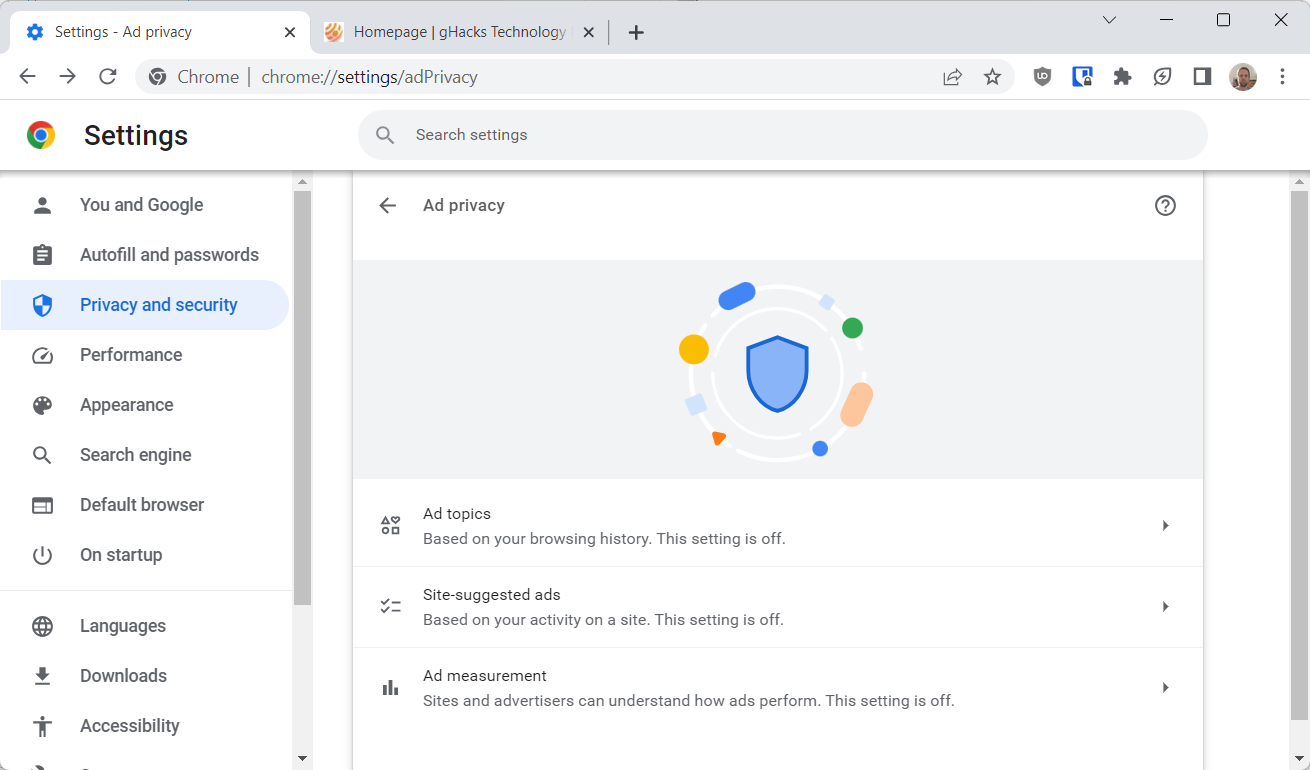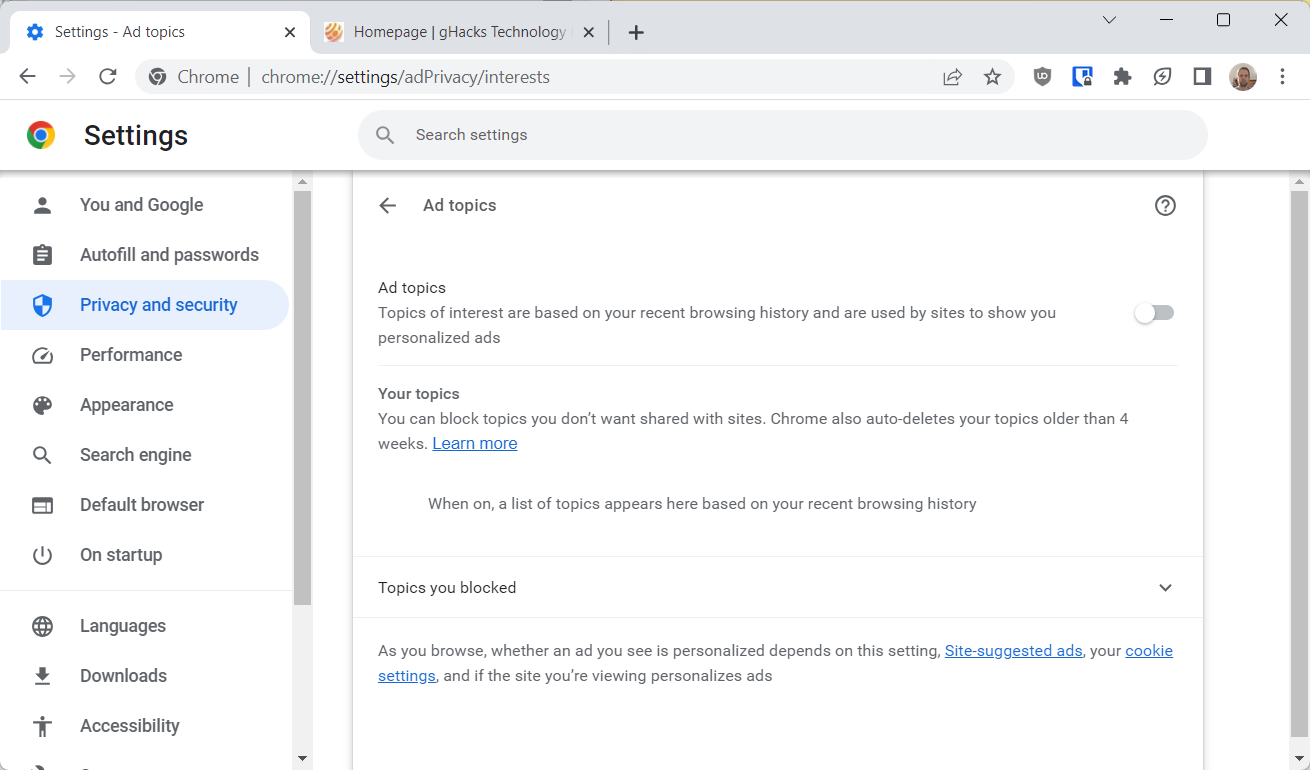Google has been working on a massive change that may have a major impact on online advertising and use of the Google Chrome web browser.
Pressure from privacy advocates and governments against current user tracking practices on the Internet has forced Google's hand. Google is the world largest advertising company and in a unique position, as it also owns the most widely used web browser and has control over the Chromium project, which most other web browsers use as their code bases.
Google's solution is an euphemistic one. The company decided to end support for third-party cookies in Google Chrome, which on its own eliminates a lot of tracking on the Internet. Chrome users may already disable third-party cookies in Chrome to achieve the same goal.
Third-party cookies tracking is replaced by a system built-into Google Chrome that Google calls euphemistically Privacy Sandbox. In fact, Privacy Sandbox is still all about advertisement. While it is true that it is changing tracking on the Internet, if enabled in Chrome and used by sites, its main purpose is tracking and use for advertising, and not to improve user privacy while online.
A side-effect of it is that it moves tracking from individual users to groups, and one could argue that this improves privacy for users. Downside is that this system is now built-into the browser, which may give Google even more control and might lead to features that Google gives users no control over.
Google has started to display popups in Chrome to users that inform users about the new technology. Google, obviously, calls it "enhanced ad privacy in Chrome" or "turn on an ad privacy feature", which most users who do not follow privacy news online may happily agree to.

When you check the current Privacy Sandbox controls in Google Chrome, you will notice that all are about ads. There is ad topics, which refers to a user's interests based on the browsing history, site-suggested ads, which allows visited sites to find out the interests of the user, and ad measurement, which allows sites and advertisers to measure the performance of ads.
Privacy is not mentioned once in the entire section. While it is possible that Google is adding more controls to the section in Settings, it is entirely used to control the new advertising system in Chrome.
Most Chrome users may want to turn off these features to improve privacy. It may seem contradictory, but disabling the options under Ad Privacy, and making another change in Chrome improves privacy actually.

Here is what needs to be done right now:
- Load chrome://settings/adPrivacy in the address bar.
- Select Ad topics and toggle the preference to Off.
- Go back to the main Settings page.
- Select Site-suggested ads and toggle the preference to Off.
- Go back to the main Settings page.
- Select Ad measurement and toggle the preference of Off.
- Load chrome://settings/cookies in the address bar next.
- Select "Block third-party cookies" under Default behavior.
Making these changes should not cause compatibility issues. There may be some sites that use third-party cookies for legitimate purposes. Chrome includes an option to add these sites to the allow list.
If you notice that you can't sign-in to a site anymore or are signed-out regularly, you may need to add specific sites to the allow list.
Here is what happens when you turn off the features: Chrome and advertisers can't track you anymore using the new system, as it is turned off. Sites won't be able to track you using cookies either anymore. That eliminates a large amount of tracking. While this won't reduce the number of ads you see on the Internet, it will reduce personalized ads dramatically.
Tracking is still possible through other means, e.g., fingerprinting techniques, which do not rely on cookies.
There are four policies available currently that control Privacy Sandbox features. Administrators may use them to disable the features for users.



3175x175(CURRENT).thumb.jpg.b05acc060982b36f5891ba728e6d953c.jpg)
Recommended Comments
There are no comments to display.
Join the conversation
You can post now and register later. If you have an account, sign in now to post with your account.
Note: Your post will require moderator approval before it will be visible.